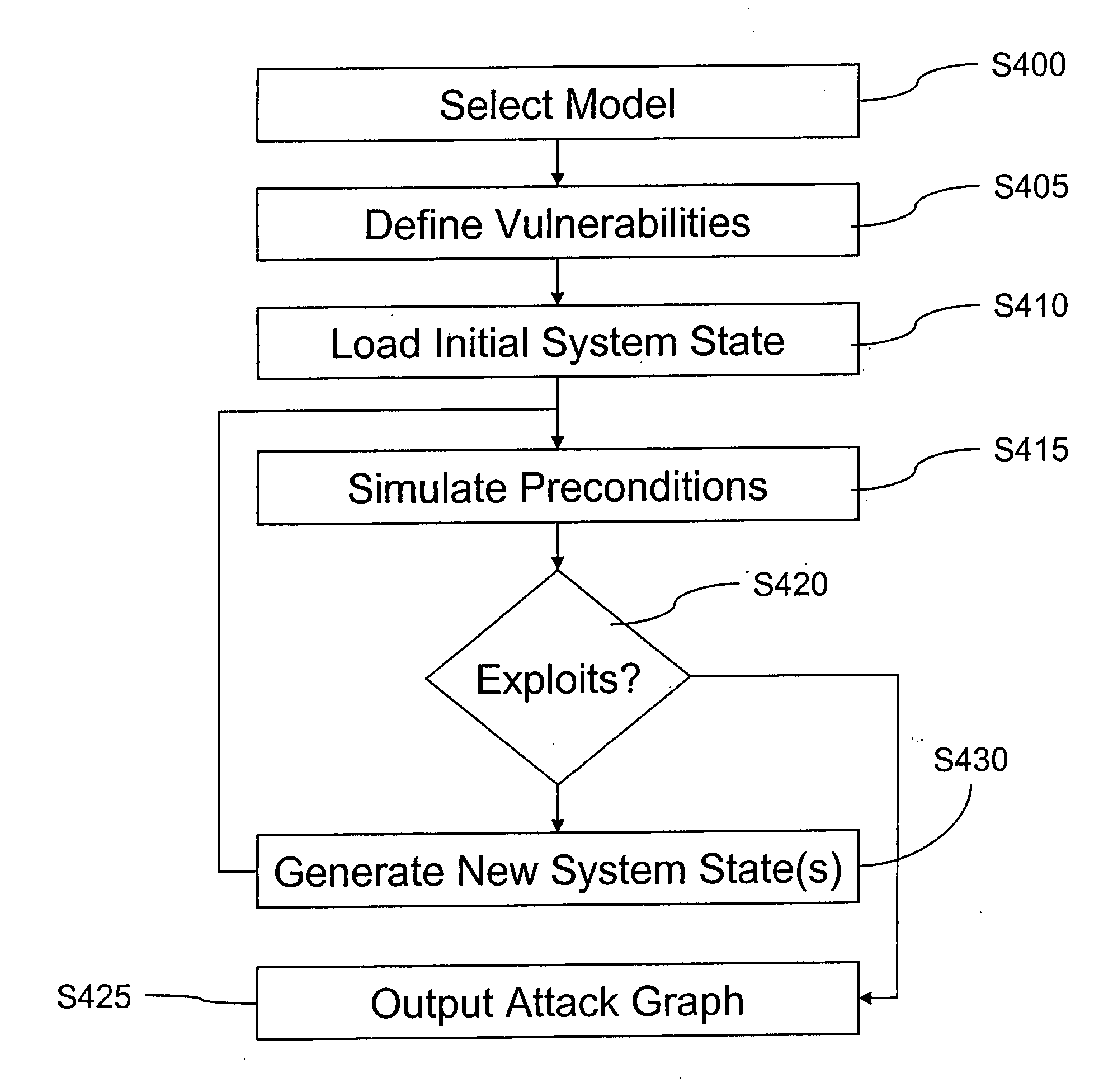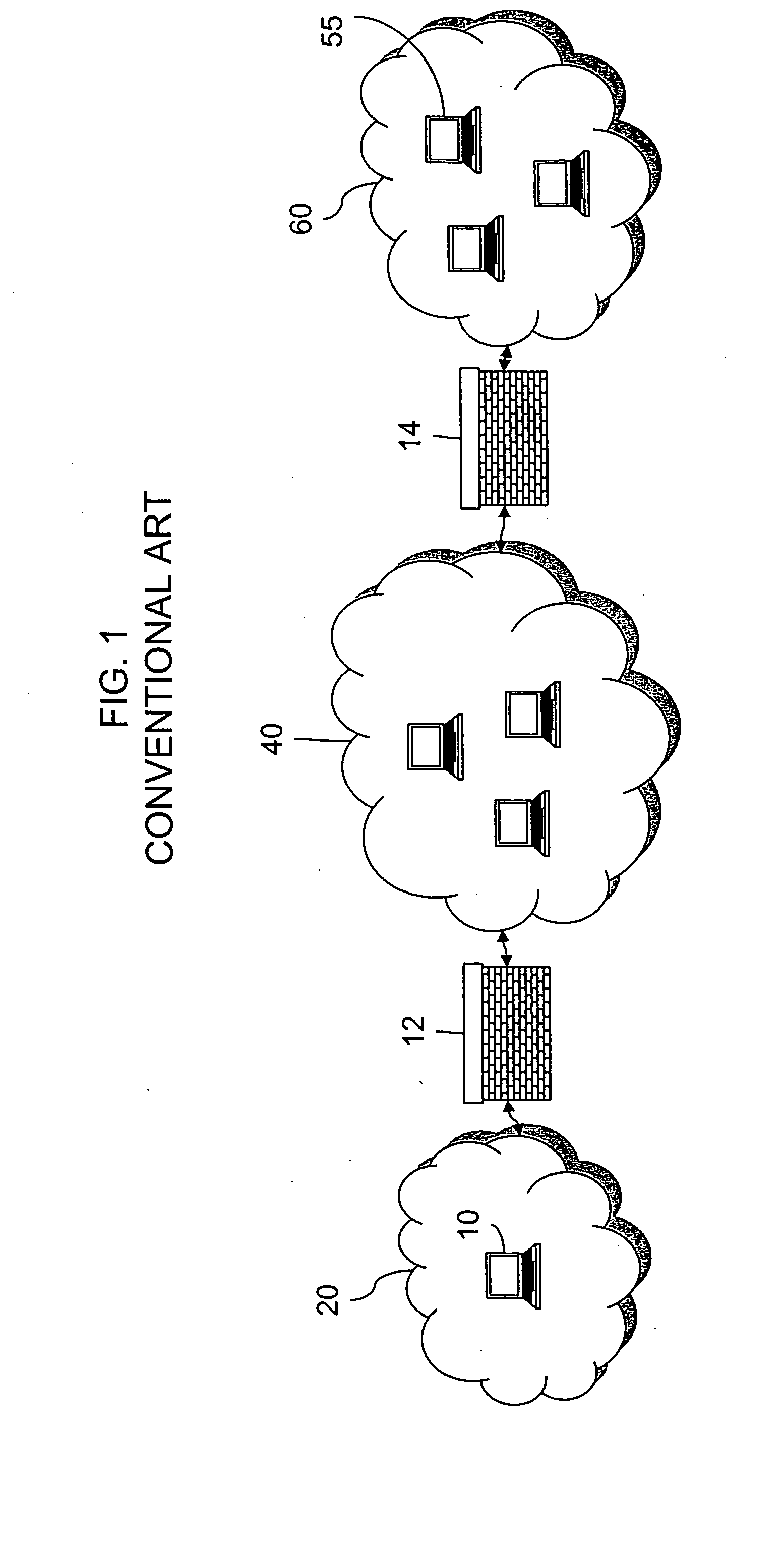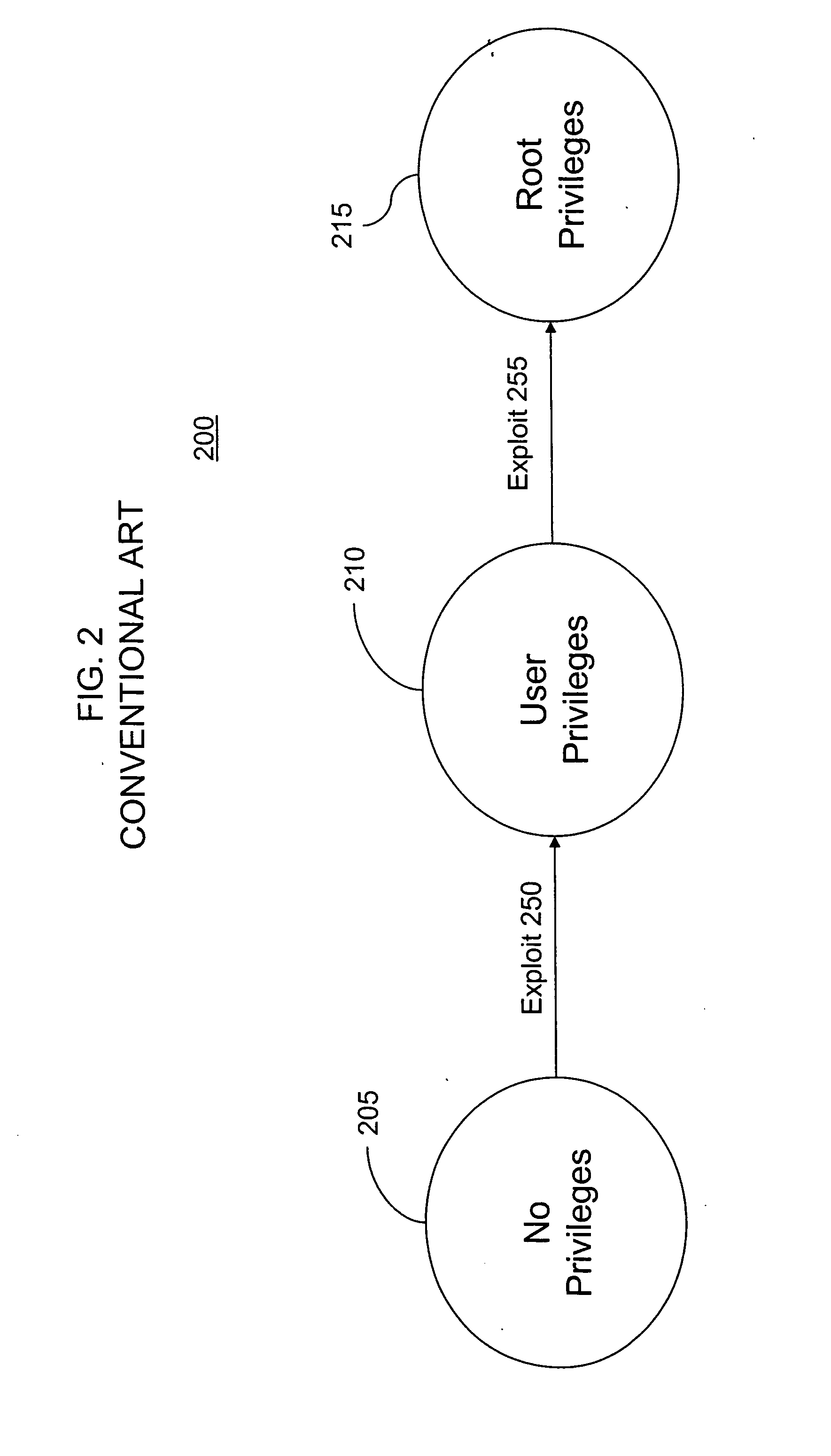Methods of simulating vulnerability
a vulnerability and simulating technology, applied in the field of methods of simulating vulnerability, can solve the problems of increasing the difficulty in tracing an attack back to the attacker's origin, increasing the difficulty of detection of attacks, and making intrusions more likely to be stolen
- Summary
- Abstract
- Description
- Claims
- Application Information
AI Technical Summary
Problems solved by technology
Method used
Image
Examples
Embodiment Construction
[0029]In order to better understand the present invention, first a discussion of attack chains and attack graphs is provided, followed by a description of a conventional single-system attack graph generation process. Then, a single-system attack graph generation process employing a vulnerability analysis tool (VAT) according to an example embodiment of the present invention is described. Finally, a multi-system attack graph generation process (hereinafter referred to as “NET_VAT”), which employs VAT iteratively, will be described in accordance with another example embodiment of the present invention.
Conventional Attack Chains and Attack Graphs
[0030]As discussed in the Background of the Invention section, an attack chain is a set of vulnerabilities that, when exploited sequentially, compromise the target system. The result of this compromise is “root access” for the attacker. Root access refers to a state where the attacker obtains root privileges, also known as “administrator” privi...
PUM
 Login to View More
Login to View More Abstract
Description
Claims
Application Information
 Login to View More
Login to View More - R&D
- Intellectual Property
- Life Sciences
- Materials
- Tech Scout
- Unparalleled Data Quality
- Higher Quality Content
- 60% Fewer Hallucinations
Browse by: Latest US Patents, China's latest patents, Technical Efficacy Thesaurus, Application Domain, Technology Topic, Popular Technical Reports.
© 2025 PatSnap. All rights reserved.Legal|Privacy policy|Modern Slavery Act Transparency Statement|Sitemap|About US| Contact US: help@patsnap.com



